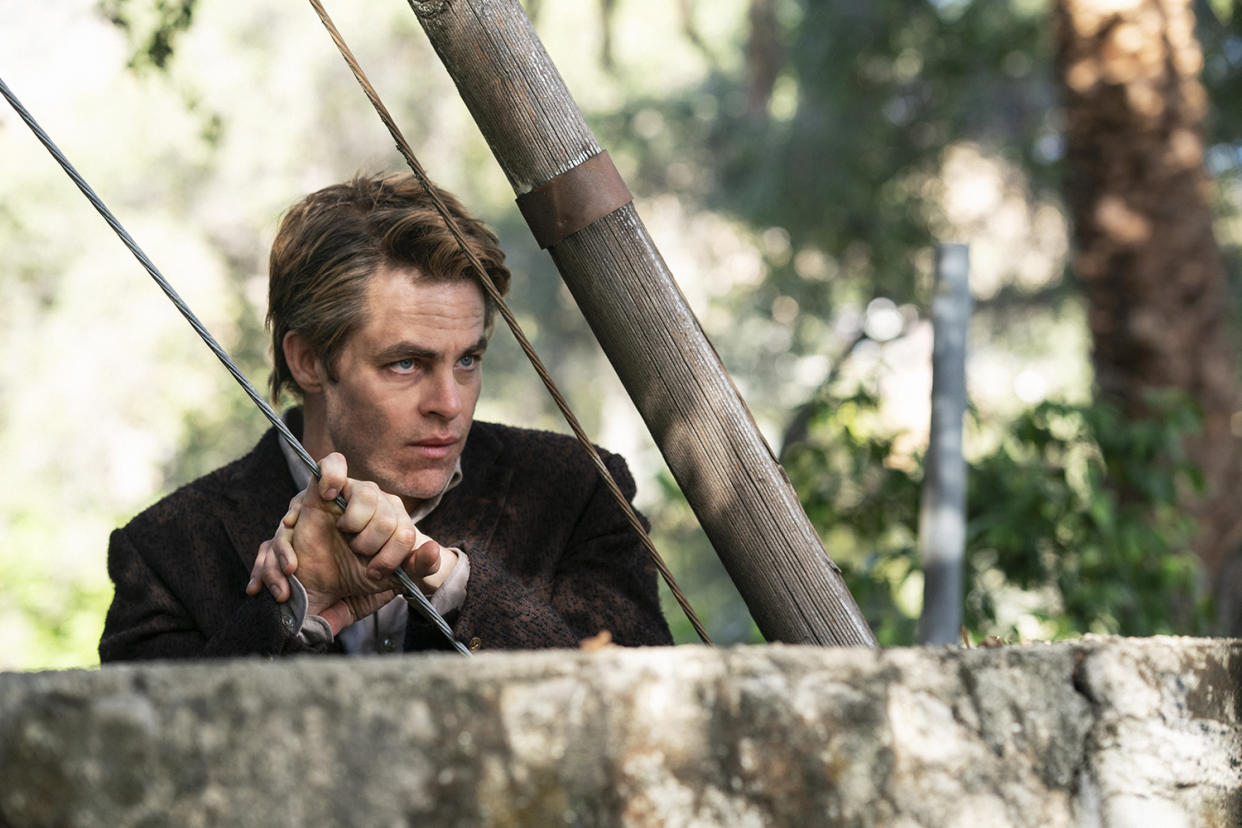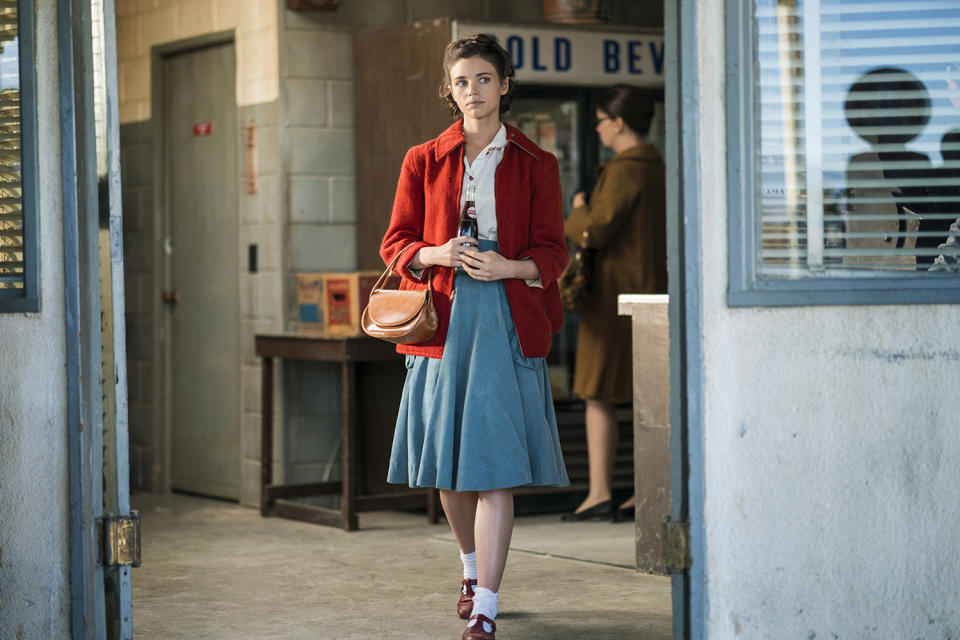Patty Jenkins reveals the real-life origins behind her true-crime miniseries 'I Am the Night'

The new limited series I Am the Night — which premieres Monday at 9 p.m. on TNT — transports viewers back to 1960s-era Hollywood, when the town was caught between the fading glamor of the Golden Age and the encroaching radicalism of the civil rights movement. Into that world walks Fauna Hodel (India Eisley), a young woman fresh off the bus from Reno, Nev., searching not for stardom, but for her birth family. Adopted by African-American parents as an infant, she’s since discovered that her origins are more complicated. Fauna’s quest to reclaim her own identity uncovers the story behind one of the town’s most famous crimes: the Black Dahlia murder.
And here’s the kicker: A lot of what you’ll see in I Am the Night is true. The real Fauna told her remarkable story in her autobiography, One Day She’ll Darken, which serves as the basis for the yarn that Patty Jenkins spins in Night. Besides helming the first two episodes, the Wonder Woman director also executive produced the series. Meanwhile her husband, Sam Sheridan, wrote the script, blending Hodel’s book with fictional flourishes like the invention of a down-on-his-luck reporter, Jay Singletary (Chris Pine), who gets caught up in Fauna’s journey. Yahoo Entertainment spoke with Jenkins about the timeliness of Hodel’s account and her own approach to bringing the past to life.
Yahoo Entertainment: One of the things I enjoyed about the first episode is the sense that we’re about to be let in on a “secret history of Hollywood” revealing what was going on behind closed doors in the 1960s.
Patty Jenkins: Yeah, definitely. And, you know, this actually ends up heading straight into one of the most famous crimes of all time in Hollywood history, but from a different point of view and exposing a lot of other elements. There are many movies influenced by this story, but this is actually the real story, which is just as rich and riveting. I lament that we’ve moved into an era where everything is exposed. However, it’s really interesting to look back at these eras that seem so sealed over with a gloss of glamour, and find out all the stuff that was going on.
Have you ever thought about what you might be doing if you were living in Hollywood at that time? Would you have been investigating what was happening behind those closed doors or would you have been a part of it?
I guess that I’d be on the creative side, just as I am now. But what a different ride that would be! There was a whole subculture where everybody knew everybody’s secrets, but nobody told. Wild!
The Black Dahlia murder lingers long in Hollywood’s memory — do you feel it represents a turning point where the glamour of the town met the grim reality of true crime?
That’s interesting, I’ve never thought about it that way. The only reason that I’d say I’m not sure that’s true is because people so fetishized [the murder]. I think it may have even had something to do with creating the romance of crime. It was such a bizarrely designed crime that I think it might have given birth to all the very creative murders that followed. It was a very pop-sensational crime. Sometimes I feel like it’s very hard to think of someone like Elizabeth Smart in a nonsensational way; it’s such a pop-y crime that she’s forever associated with.
In terms of how you approach recreating the past, would you say this version of ’60s Hollywood is more realistic or more romanticized?
It’s totally realistic. However, how we shot it was more controlled. That’s the formula that we came up with: You’re controlling the color palette, and you’re definitely being a little bit design-y here and there, but the details are all kind of gritty and real. Being extremely performance and emotion based is my focus; I’m trying to look for the very relatable human beings in every period of time and then get great performances to display that in a way that brings it to you. The performances have to be grounded in truth and reality, but they can also have flourishes for a bigger emotion.
One scene in the premiere jumps out as having that combination of reality and bigger flourishes that you describe: It’s a moment where Jay is trapped in a morgue surrounded by other dead bodies, and he just starts laughing uncontrollably.
There’s nothing more fun than directing a character who has nothing to lose. The freedom that comes from that is something so few of us really know. When Jay gets locked in the morgue and realizes he’s stuck, it’s the absurdity of it that makes him laugh. I think that was one of Chris’s earliest takes. He started laughing that way and we all loved it.
Jay isn’t based on a specific person, correct?
Yeah, he’s an amalgam. There were reporters who got their names smeared, and there were other journalists and detectives. What we were looking for was a way to blend a number of those elements into one person, so that we would have a way to tell that side of the story.

The real Fauna Hodel passed away in 2017. How much of a chance did you have to work with her before her passing?
A lot. I’d been friends with her since she had pitched me her story 10 years ago, and when we started working on this, we had endless conversations as we were writing it and right up until we started scouting. It’s unbelievable to me that she passed away right then. She’s definitely on all of our minds often, and even though it’s sad that she’s not here to see it, it’s turned into an incredible way to honor her for her family. Her two daughters have been with us every step of the way.
Her experience has elements of the story told in Imitation of Life, and the series has some of that visual lushness present in Douglas Sirk’s 1959 movie too.
I love that movie. It wasn’t one of the ones that I particularly focused on, but definitely it’s in there in my head. The lushness is such an interesting direction to go. I always am a big believer in juxtaposition in all art; I think that you don’t want everything that you’re doing to tell the same emotion or else it gets really dull. Electric juxtaposition is something I’m always super-interested in.
Did Fauna have a sense of how her story would resonate today when racial issues are again very much at the forefront of the national dialogue?
You know, I feel like she missed a lot of that being sick, but she was living it the whole time. She has been somebody who was living between race and gender. She was always a true renegade in that way, just breaking all rules of what identity should mean. If anything, I think it’s like we’re in this chapter where we’re finally starting to actually break down the boundaries between what those definitions are, and there’s no one better to lead the way than Fauna Hodel.
What’s most interesting about the 1960s is the radical changes afoot. That was why we start the series in the place where Fauna Hodel grew up, which was very conservative and very in the past. Everything almost looks like 1950s because they didn’t change clothing very rapidly. Then she comes to L.A., and radical things are happening with everybody’s hair, with their style, with not taking no for an answer and with forcing integration and all that. So this person is looking for their identity in a moment where people are finally saying, “I won’t accept the identity you’re putting upon me any longer.”
I Am the Night premieres Monday at 9 p.m. on TNT. One Day She’ll Darken is available for purchase via Barnes & Noble.
Read more from Yahoo Entertainment:
Forget Gandalf and Dumbledore: Patrick Stewart on why he makes the best big-screen wizard
The surprising, subtle moment in ‘Crazy Rich Asians’ that drove unexpected tears
Yahoo Entertainment may receive a share from purchases made via links on this page.

